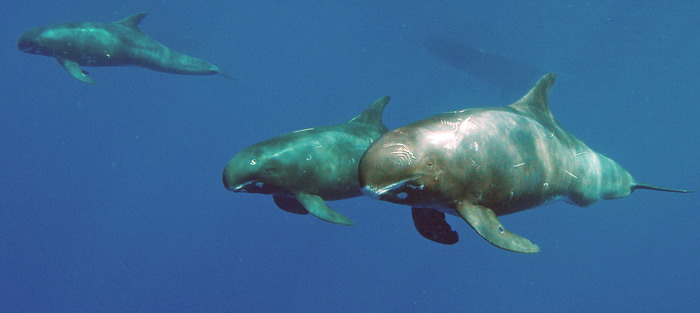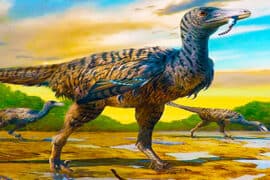Pygmy killer whale
(Feresa attenuata)

Description
The pygmy killer whale (Feresa attenuata) is a poorly known and rarely seen oceanic dolphin.It derives its common name from sharing some physical characteristics with the killer whale.It is the smallest species that has "whale" in its common name.Although the species has been known to be extremely aggressive in captivity,this aggressive behavior has not been observed in the wild.The species had been described by John Gray in 1874,based on two skulls identified in 1827 and 1874.The next recorded sighting was in 1952 which led to its formal naming by Japanese cetologist Munesato Yamada in 1954.The pygmy killer whale is dark gray to black on the cape and has a sharp change to lighter gray on the sides.The flesh around their lips and on the end of their snout is white while pinkish white skin surrounds the genitals.The average length is just over two meters (6.5 ft.).Upon reaching 2 meters in length,males are considered sexually mature.They have approximately 48 teeth,with 22 teeth on the top jaw and 26 on the lower jaw.The pygmy killer whale avoids human contact.They are not acrobatic animals;but,some spy-hopping,breaching,and other active behaviors have been recorded.These dolphins move in groups,usually of 10 to 30,but occasionally much larger.They travel approximately 3 km/hour (2 miles/hour) and are predominately found in deeper waters ranging from 500 m to 2000 m (1600–6500 ft.) in depth.Their diet consists of cephalopods and small fish.They have been observed attacking,killing,and eating other cetacean species such as the common dolphin.Blood analysis from individuals off the coast of southeastern Brazil showed a mercury:selenium ratio of 1.6:1,which is higher than the typical 1:1 ratio common in other odontocetes;this was attributed to local use of fungicides and chemicals used in gold extraction that are high in mercury.
Taxonomic tree:







